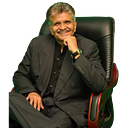Deepavali / Diwali and its significance
What is Diwali?
Diwali, the festival of lights, signifies the victory of good over evil and the eradication of dark shadows, negativity, and doubts from our lives. It is a celebration of prosperity, in which people give gifts to their loved ones.
Festival of Lights
Diwali, the five-day Festival of Lights, is celebrated by millions of Hindus, Sikhs and Jains across the world. The word Diwali comes from the Sanskrit word Diwali, meaning rows of lighted lamps. Houses, shops, and public places are decorated with small oil lamps called divas.
Why is Diwali celebrated?
The true essence of Diwali symbolizes how purity, love, and devotion are the antidote to any impurities, negativity, or toxicity when Lord Ram& Queen Sita return to Ayodhya {state of India} after 14 years of banishment and overcame their banishment from Ravana{symbol of evil}. On Diwali night, most Hindus offer prayers to Lakshmi, the goddess of wealth, and Ganesh, the god representing good fortune and wisdom for the coming year.
What are the 5 days of Diwali?
The five-day long festival of joy and prayer starts with Dhanteras, followed by Naraka Chaturdasi, Lakshmi Puja, Govardhan Puja and culminates with Bhai Doo. The date for this festival is set in accordance with Hindu and the lunar calendar
What is done for Diwali?
During Diwali, people wear their finest clothes, illuminate the interior and exterior of their homes with divas and rangoli, perform worship ceremonies of Lakshmi, the goddess of prosperity and wealth, light fireworks, and partake in family feasts, where mithai (sweets) and gifts are shared.
What are the beliefs and True Essence of Diwali?
One of the most popular festivals of Hinduism, Diwali symbolizes the spiritual victory of light over darkness, good over evil, and knowledge over ignorance.
Why use the Diya, an oil lamp compared to our normal gleaming lights, that we use for other celebrations. For this, let's drill down into the term Deepavali, which literally means a series or a row of lights that are all connected to one another by the simple Diya. (‘Dipa’ means lamp; ‘aavali’ means series or row of lights). How are they all connected? Through the humble Diya– the little earthen vessel that represents the five elements; earth, fire, sky, air, and water.
The element of Earth is represented in the composition of the Diya, oil, and cotton wick. Fire is represented in the light of the Diya. The sky is represented in the light around the flame and the space in which the Diya lies, i.e., the space around the earth. The element of Airis the oxygen diffused from air to the wick causing it to burn. The element of Water is the H2O molecules formed after the combustion of oil, the by-product of burning.
So, when we light the oil lamp on Diwali, we represent the constitution of the universe — right at our doorstep. Magnificently portrayed.
The lighting of the lamp leads to the annihilation of darkness. Deepavali is a Festival of Lights hence the celebration firstly of the rise of Knowledge and secondly the celebration of the victory of the Sattvic or divine elements in us over the Rajasic and Tamasic or baser elements which are the real Asuras {evil spirits, demons, and opponents of God} and the Rakshasas, {demons} within us.
For the oil lamp to burn, its wick must be soaked in the oil with a bit protruding out of the oil. If the wick of the lamp is drowned in oil, it cannot be lit. Life is also like a wick of the lamp, one must be in the world and yet remain unconsumed by it. If one drowns in the materialism of the world, bringing joy and knowledge in life is limited.
Finally, the Diya burns itself, to provide light and joy to others. Similarly, Celebration is incomplete, without Seva {Selfless service}towards others.
